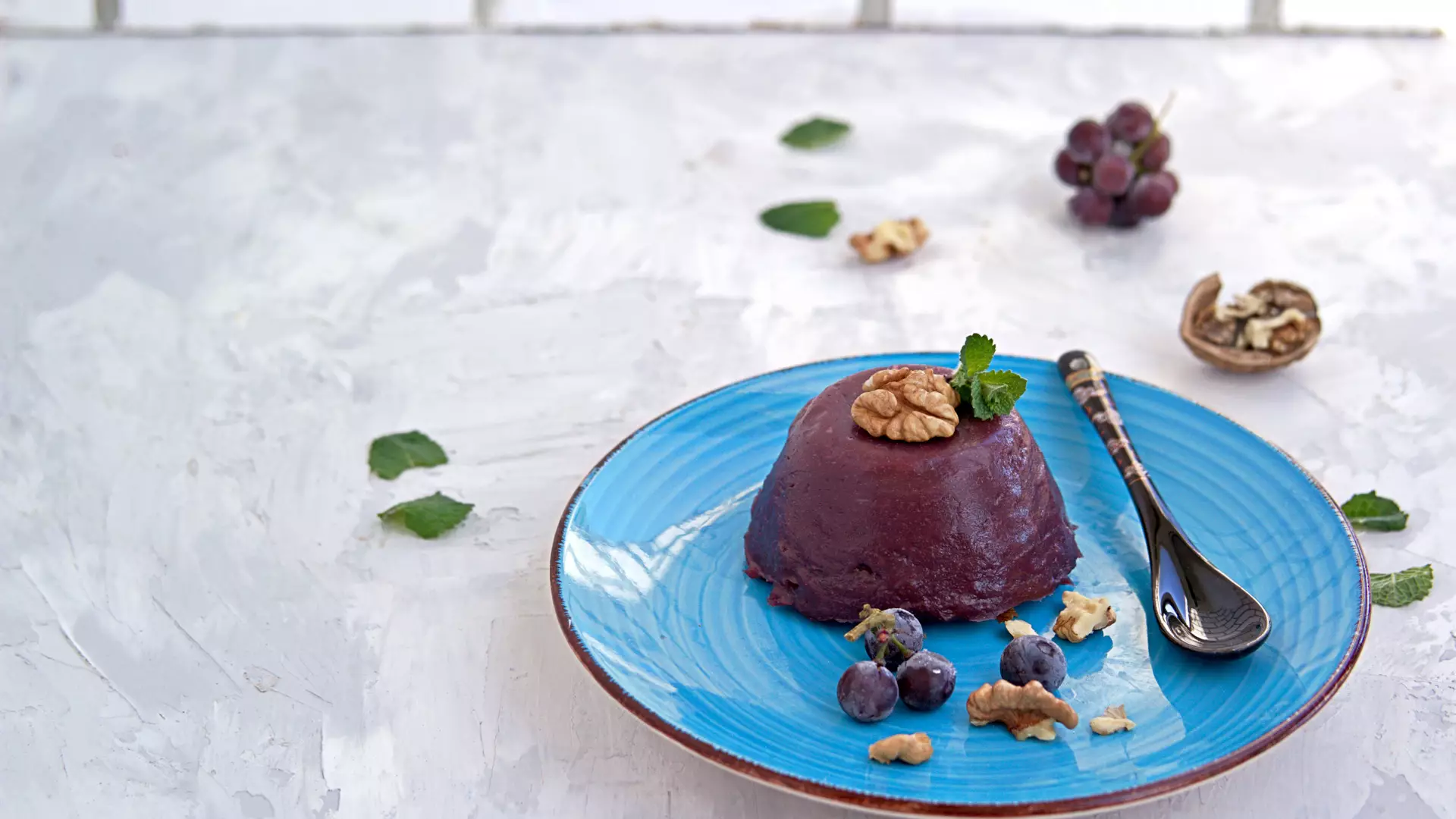Pelamushi
Pelamushi – From the Bunch to the Table
For pelamushi to continue having its status as a natural product, no sugar can be added to it during creation. Once you’ve tasted this sweet treat, you’ll understand why! The natural sweetness of the grapes is more than enough!
To ensure the sweetest possible pelamushi, housewives deliberately try to keep grapes in the vineyard or on the pergola until late autumn, as late as October or November, to ensure the bunches have had their fill of sun and reached their maximum sweetness.
Once ready, the grapes are removed and pressed. If the juice separates from the skins quickly, the pelamushi will have a light colour, otherwise it will be comparatively dark.
All grape varieties that are common in western Georgia are used to make pelamushi, but especially Adesa, which has low value as a wine grape, but makes the best pelamushi. Adesa pelamushi has a special flavor, being semi-sweet and semi-sour.
In Guria and Ajara you will often hear the term “petmezi”, which is the well-boiled juice of grapes made for pelamushi. The act of petmezing is skimming the boiled juice well and boiling it. Juice preserved in this way ends up more transparent and does not have any dregs.
How to Make Pelamushi
Good pelamushi demands the processing of good grapes, whose juice is then poured into a pot with a thick base. Traditionally, a pot with a round base and no lid is used for pelamushi. This kind of pot is called a “chakhana” in western Georgia.
Next, put one cup of corn meal into a litre of grape juice, stirring well with a wooden spoon. The corn meal should completely dissolve, so keep stirring until the thickened juice begins to boil and bubble. Once it starts to boil, turn the flame down and allow the mix to simmer for 25-30 minutes. Once the smell of the corn meal dissipates and the juice makes a thin layer of crust on the walls of the pot, the pelamushi is ready.
It is important to get a bowl ready for the pelamushi before it boils. Before pouring the pelamushi into it, rinse it with water, so that the pelamushi does not stick to the walls and is easy to remove. Make sure the pelamushi is well cooled before bringing it to the table.
Different Types and Flavors of Pelamushi
Traditionally, numerous shapes and sizes of dishes have been used for pelamushi, including soup-plates, broad plates, and bowls. Recently, pelamushi has acquired new forms and very convenient silicon molds of various sizes have come into use.
Also, nowadays you will come across colorful pelamushi, for which different varieties of grapes are used – white, pink, and black.
For a long time, people have been pouring a thin layer of pelamushi onto wooden boards, drying it, and making pastries. However, now there is a new innovation – pelamushi rolls – this is when a mixture of roasted hazelnuts and walnuts is spread over a thin, cooled layer of pelamushi and rolled up into it. As decoration, dried fruits are also used along with nuts.
Cookie Policy

